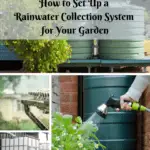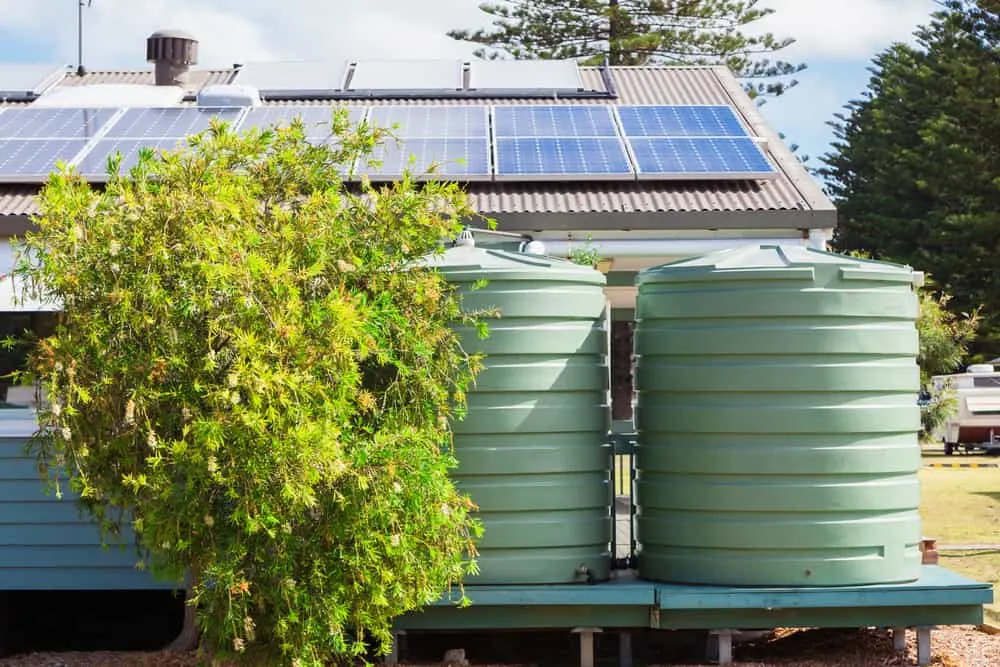
Rainwater harvesting is the ancient practice of collecting and storing precipitation for later use.
This technology can be traced back some 12,000 years in human history, and it makes just as much sense today to take advantage of a precious resource that freely falls from above.
The simplest rainwater harvesting system involves a basic rain barrel situated next to your home.
Using a catchment surface – usually a roof – to channel rainfall and melted snow into the gutters, the rain is gravity fed into a downspout connected to the rain barrel.
Filters and screens can be used to help keep debris out of the collected water.
A spigot is installed at the base of the barrel to provide access to the water and additional barrels can be connected to increase capacity.
Of course more complex systems exist, including year-round, indoor setups for the whole home.
Under these more advanced setups, untreated rainwater could be piped into the home to supply waste water for toilet flushing – which can help reduce water bills by 30%.
Or, rain is purified and used to supply clean water for drinking, laundry, showers, dishwashing, cooking, and cleaning.
The nice thing about rainwater harvesting is you can start small and scale up. And a first time DIY setup is inexpensive and will only eat up about a half hour of your time.
Why Save Rainwater?
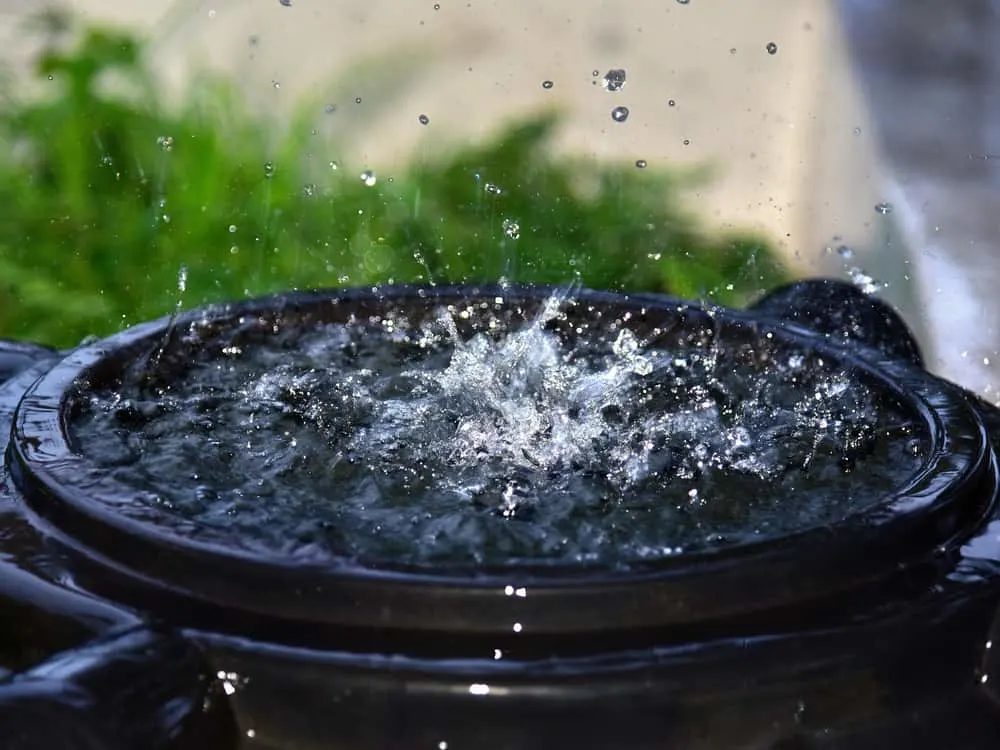
It’s a Free Source of Water
The clearest benefit of rainwater harvesting is it allows you to obtain a relatively clean source of water, for free.
This point is especially vital when 14 million households in the United States struggle to pay their water bills today.
Adapting to climate change and replacing aging water infrastructure across the nation means the cost of water is expected to rise by 41% by 2022, according to a 2017 paper.
This conservative estimate means that one third – or 41 million – households may not be able to afford clean water.
Rainwater is a High Quality Source of Water
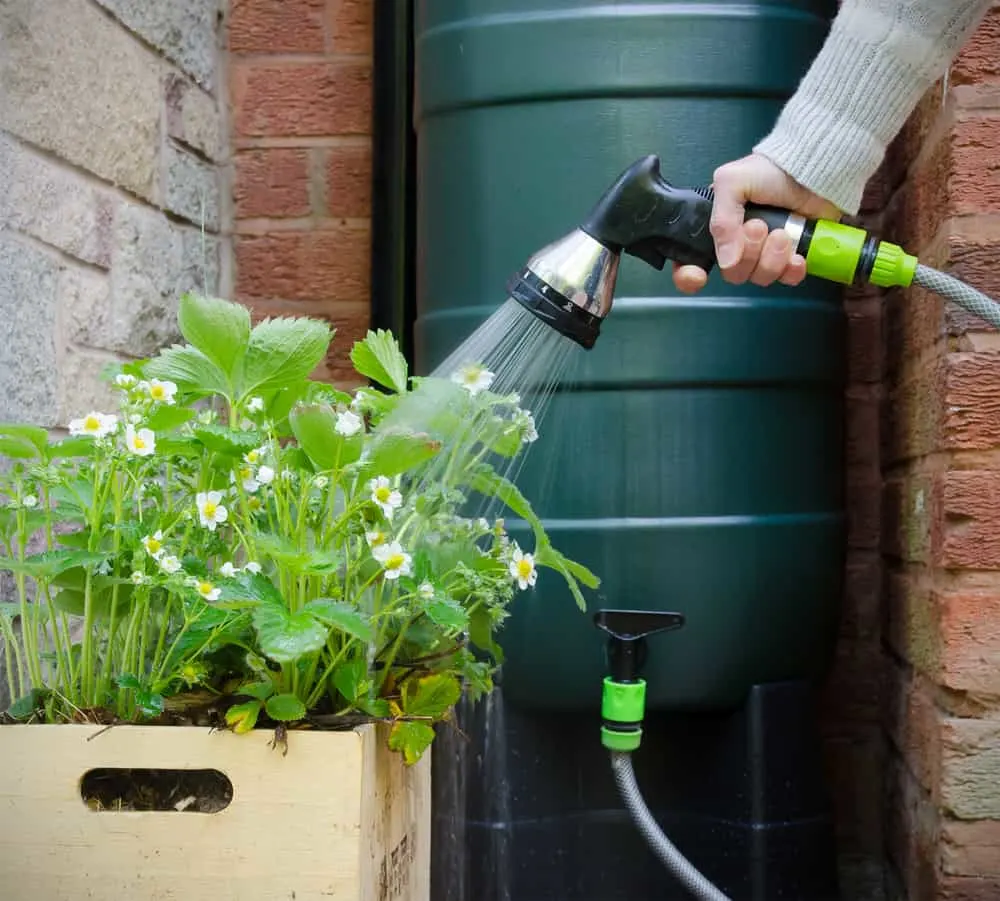
Rainwater is naturally soft and free from chlorine, fluoride, and other chemicals typically added to the municipally-treated water supply. It is also mineral free and contains no sodium.
When collecting rainwater for outdoor, non-potable uses, it requires no treatment.
You can use it as you collect it to water your garden, fill a pool, pond, or other water feature, for outdoor cleaning and power washing, to wash your vehicle, and to bathe your pets.
While rainwater is fairly clean, it can pick up bacteria, viruses, and cysts from the air or when it makes contact with the roof, piping, or tank.
Rainwater used for potable purposes must first be treated with a fairly simple disinfection process.
It’s an Independent Water Supply
Preparing now for a future where water is scarce is never a bad idea.
Rainwater harvesting allows you to become more self sufficient by having your own independent water supply.
In times of drought or when clean water becomes too costly, rainwater can be used as a supplemental source that can help ease demand on well or city water.
It can also be used as a backup source of water in emergencies.
It Promotes Water Conservation
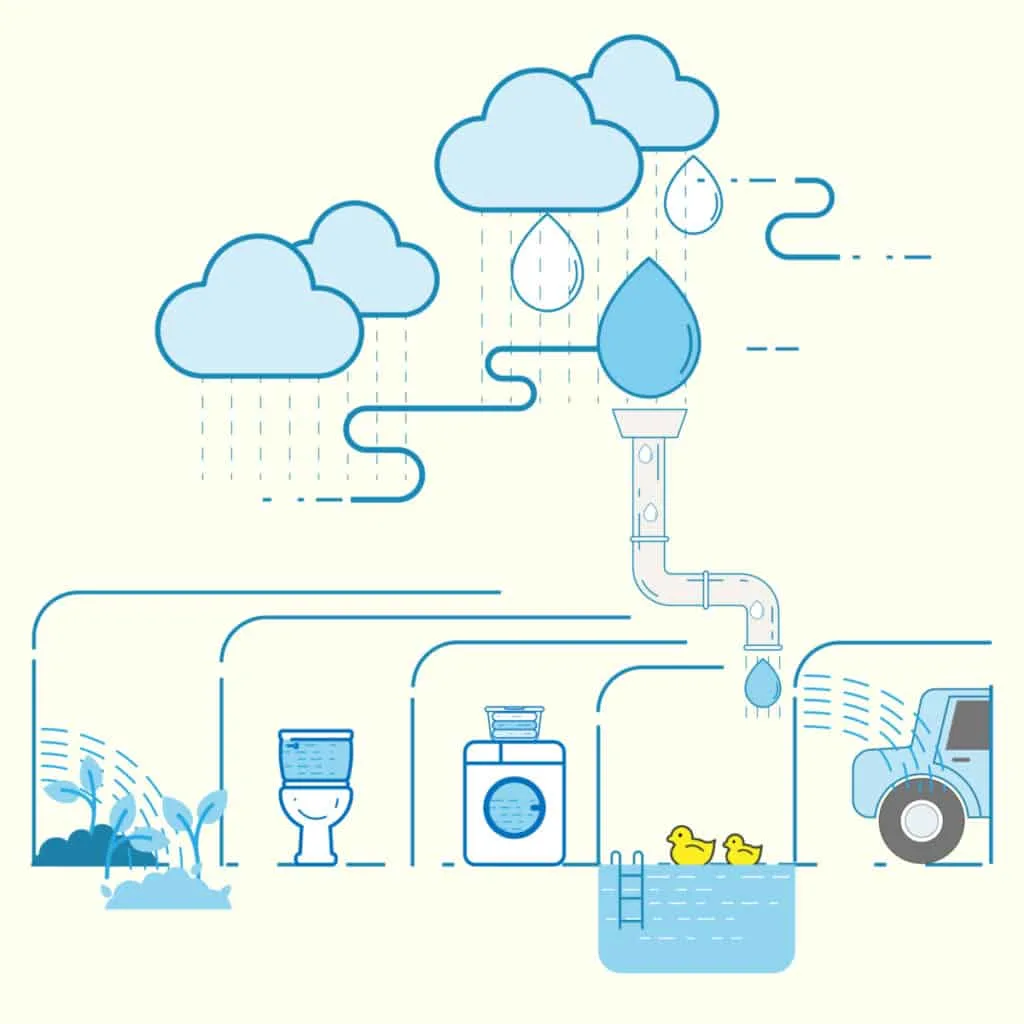
Living in a part of the world where water has been cheap and abundant, endlessly flowing through the twist of the tap, means that we have become disconnected from the issues of water supply and are less mindful of wastefulness.
Consider that, on average, between 33% to 50% of domestic water use is applied to lawns and gardens each year and that less than 3% of potable water is actually used for drinking.
But by becoming directly involved with our own water supply, as with rainwater collection, water consumption is consciously reduced.
Before relying on rainwater, either wholly or partially, it’s wise to seal any leaks and install dual flush toilets, low flow showers, and high efficiency washing machines and dishwashers to reduce consumption by a further 40%.
It Lessens Demand on Groundwater
Groundwater is water found hundreds of feet beneath the earth’s surface.
It supplies aquifers and wells, and more than one third of the world’s population relies on groundwater as its sole source of drinking water.
Although groundwater is plentiful today – the estimated amount is 5.6 million cubic miles, over a thousand times more than all the world’s lakes and rivers combined – it is being used much faster than it can be replenished.
Groundwater is recharged by rain and melted snow that penetrates deep below the land surface, but the process is quite slow.
A 2015 study found that just 6% of the earth’s groundwater was replenished over the last 50 years.
It Can Minimize Flooding and Stormwater Runoff
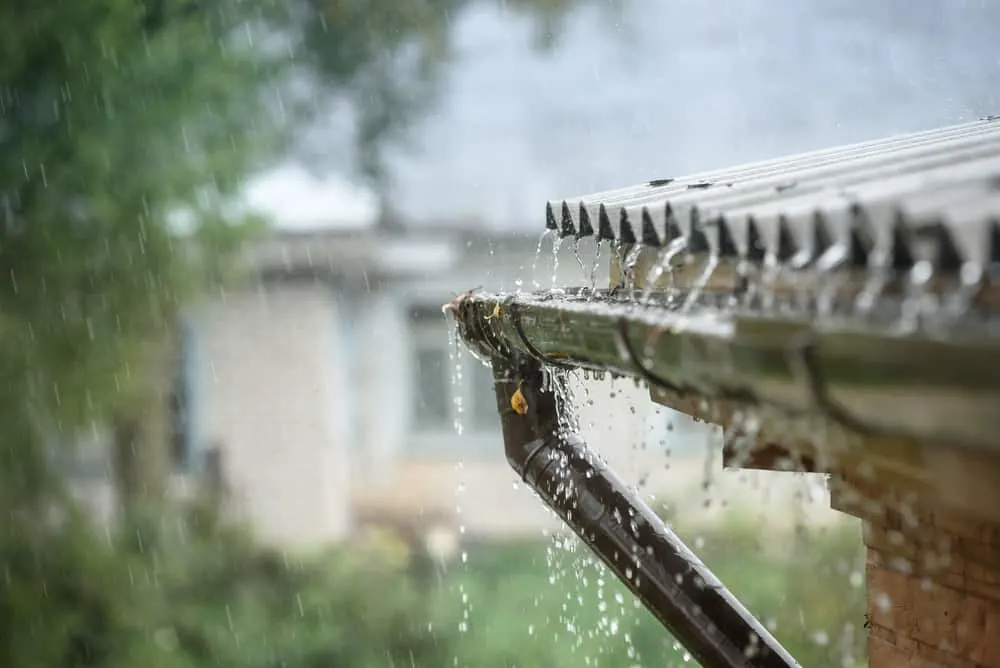
During heavy rains, rainwater harvesting can help prevent your home from flooding since it diverts water away from the ground and into storage.
This can be invaluable if you happen to reside within a flood plain or a low lying area.
Rainwater harvesting can also reduce water pollution caused by stormwater runoff.
More crucial in urban environments, where non porous surfaces like roads and parking lots prevent rain from penetrating the ground, stormwaters pick up oils, chemicals, and other pollutants and are released into nearby rivers and streams.
How Much Rainwater Can Be Collected?
The pitter patter of rain may not seem like much each drop certainly adds up. Every inch of rainfall over a 1,000 square foot roof will provide around 623 gallons of water.
To determine how much water you can collect, use this simple formula:
- 1” of rainfall x 1 square foot = 0.623 gallons.
For a better idea of what your rainwater collection potential is, check the NOAA Climate Atlas for average annual precipitation for your specific location.
In general, you can expect to collect around 75% to 80% of the actual rainfall at a given time.
Rain collection efficiency is impacted by roofing material, branches that overhang the home, and wind.
Is Rainwater Harvesting Legal?
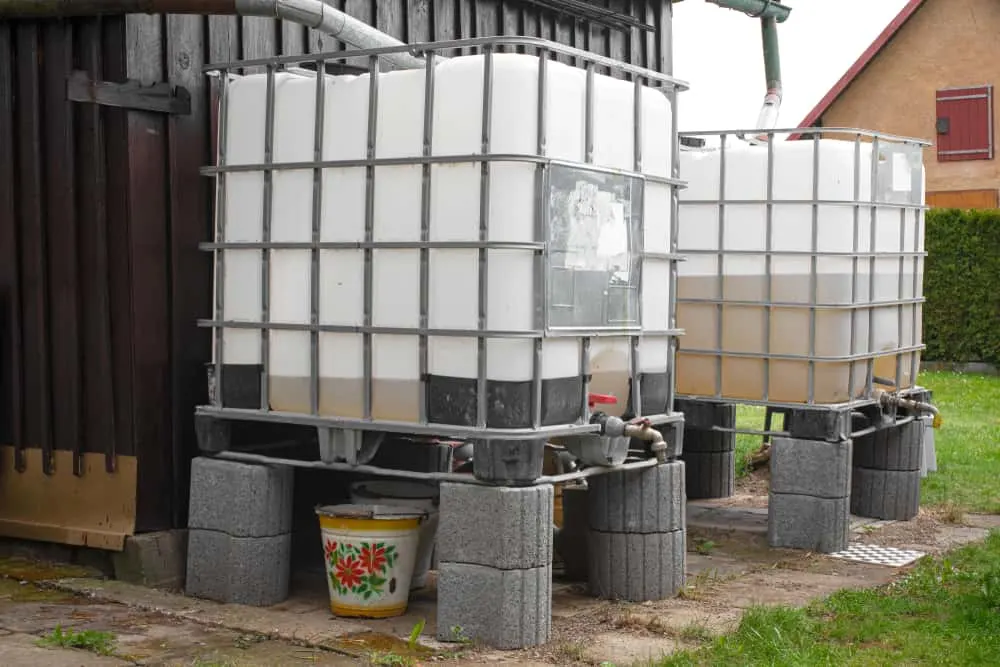
Rainwater harvesting is legal in all 50 states. However, that isn’t to say there aren’t rules and regulations to follow, depending on the state.
Colorado, for example, is one of the most restrictive – rainwater collection is limited to two rain barrels with a combined capacity of 110 gallons, and is for outdoor use only.
But other areas actively encourage rainwater harvesting in residential settings.
Florida, Delaware, and Maryland provide tax incentives and reimbursement programs to help cover the cost of setting up a home rainwater collection system.
Considerations Before Setting Up a Rainwater Collection System
Setups can range from the ridiculously simple to the amazingly complex. Before set up, you should consider:
Tank Size
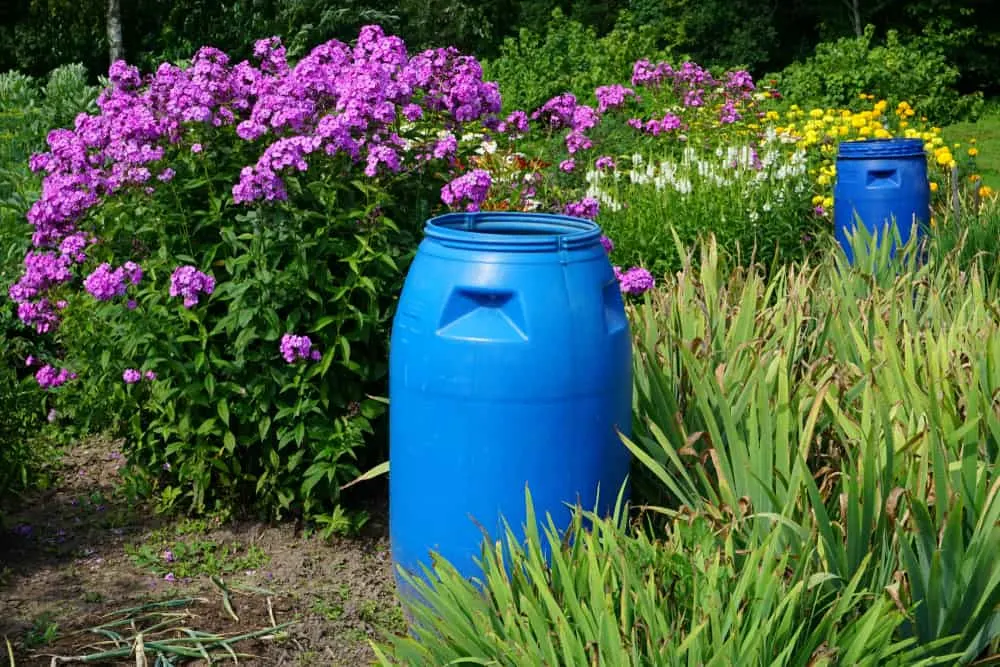
In areas where precipitation patterns are consistent, smaller tanks would be sufficient for landscape irrigation and other outdoor uses.
However, in places where rainfall is seasonal, or you desire a year-round, potable setup, you would need to calculate your current water usage balanced against estimated rainfall collection for each month of the year.
Roofing Material
The ideal roofing materials for rainwater collection are factory-coated enamelled steel, terracotta, concrete tile, glazed slate, and zinc-coated galvanized metal.
These materials are the easiest to maintain and are the safest to use in both potable and non-potable setups.
Avoid modern asphalt and fiberglass shingles which typically come coated in anti-fungal chemicals to prevent the growth of moss.
Additionally, potential toxins can be found in cedar shakes, cedar shingles, Bitumen, and composition roofing.
These types of roofing materials are not suitable for potable water uses and may even harm your plants.
Gutters
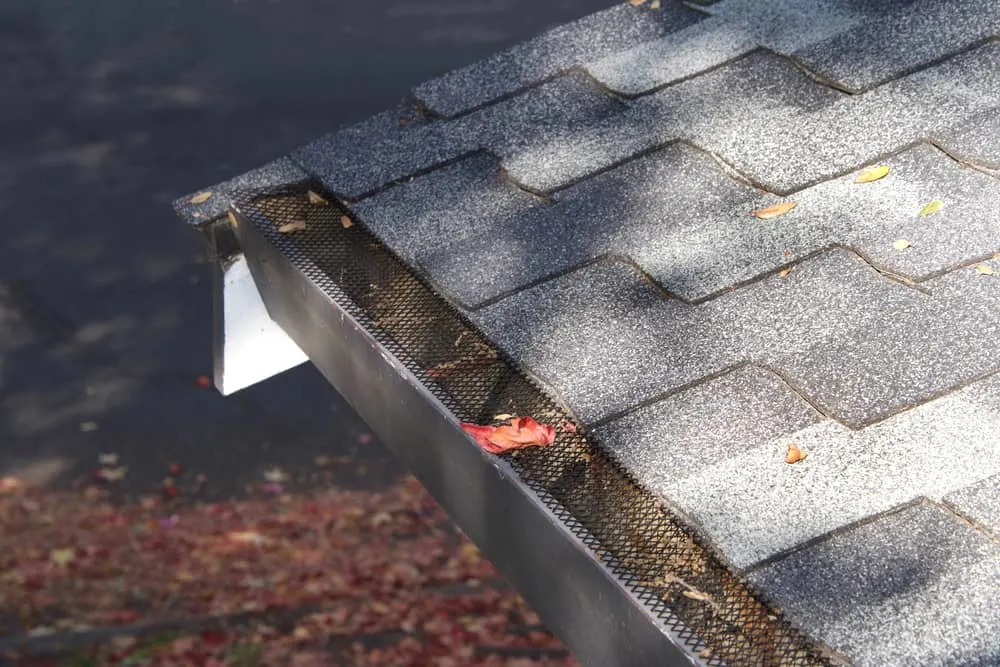
Gutters made from coated aluminum and vinyl are the best choice for rainwater collection. Galvanized steel gutters are suitable for non-potable systems.
Avoid using gutters made with copper or lead materials.
Gutters should be at least 5 inches wide to handle peak water flow. Ensure gutters completely dry out between rains by installing them with a minimum 1/16” slope per foot.
Adding gutter covers or debris screens improve water quality while reducing the need for frequent gutter cleaning.
8 Rainwater Harvesting DIYs
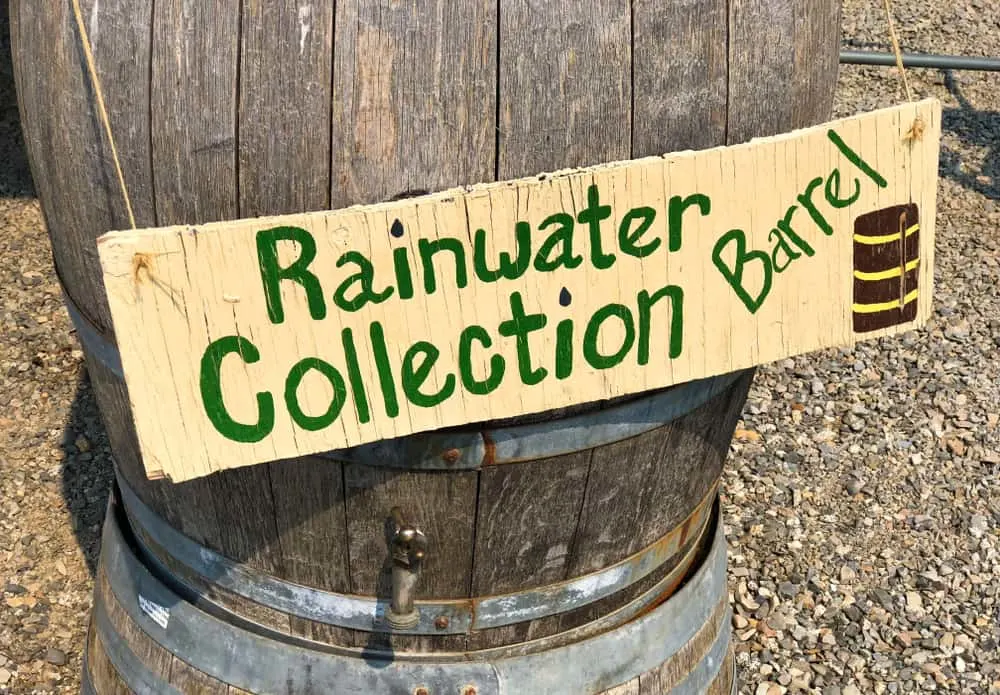
Here are some non-potable outdoor rainwater collection systems, from the super simple to slightly more complex:
1. Garbage Can Rain Barrel
Perhaps the cheapest and easiest way to get started, this uncomplicated setup requires a 32 gallon plastic trash can with lid, a brass faucet with two threaded washers, and a flexible gutter downspout.
Get the tutorial here.
2. A Prettier Rain Barrel
A bit more aesthetically pleasing, this rain barrel how-to includes some extras like adding a mesh screen to the downspout and including a hose attachment to handle any overflow during heavy rains.
Get the tutorial here.
3. The Enclosed Rain Barrel
For a discrete rain collection setup, the rain barrel is enclosed within a study, wooden shell.
It’s a two day project that will cost around $150.
Once completed, slap a coat of paint on it to make it blend even more with its environs.
Get the tutorial here.
4. Standalone Rain Catcher
When you lack a suitable catchment surface, this standalone rain barrel design incorporates a tarp on top to catch the rain, similar to an inverted umbrella.
Get the tutorial here.
5. Rain Barrels with PVC Piping
In this DIY, a series of PVC pipes are used to connect two or more rain barrels, with overflow piping and garden hose attachment for irrigation.
Since the pipes are drilled into the underside of the barrels, and the barrels sit atop a wooden stand, most of them are neatly hidden from sight.
Get the tutorial here.
6. 275 Gallon Rainwater Tank
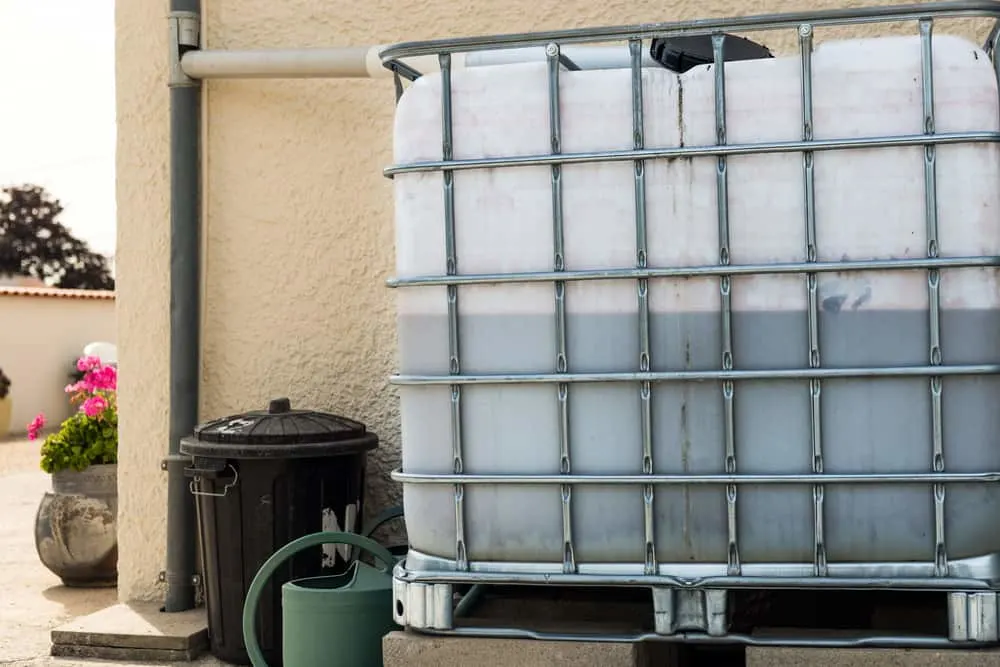
Using a recycled intermediate bulk container (or IBC), this project increases rain collection volume to 275 gallons, all in one container.
Watch the accompanying videos to see how it’s done, as well as the final update where they added two more IBCs in an enclosure that helps the setup blend into the building.
Get the tutorial here.
7. Vertical Rain Barrel System
When you would prefer to build “up” rather than “out”, this system situates the rain barrels so they lay horizontally, allowing them to be stacked on top of each other, supported with a wooden frame.
Get the tutorial here.
8. Homesteader Rain Collector
Best for large gardens that have a high water demand, this 2,500 gallon set up is located next to the barn and includes extras like a water pump, overflow system, and first flow diverter that flushes the first few gallons of collected rain to prevent dust and dirt from accumulating in the cistern.
Get the tutorial here.

Get the famous Rural Sprout newsletter delivered to your inbox.
Including Sunday musings from our editor, Tracey, as well as “What’s Up Wednesday” our roundup of what’s in season and new article updates and alerts.


